 username@email.com
username@email.com
In this lesson, you will review genetic diversity. Scientists, regardless of their specialization, need to possess a basic level of science literacy across all disciplines. This lesson provides an overview of the major concepts pertaining to fossils, evolution, and diversity that all students of the sciences should know. The chapters that follow will focus in greater detail on these ideas.
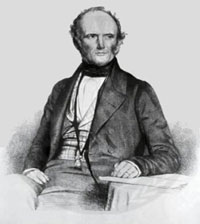
Charles Lyell |
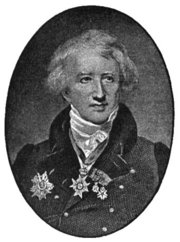
Georges Cuvier |
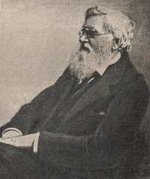
Alfred Wallace |
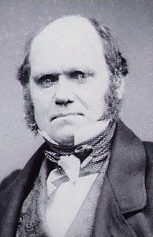
Charles Darwin |
The distribution of vertebrate fossils and species played a big part in Darwin’s work. The position of fossils in the geologic strata showed a progressive change from ancient to modern organisms. Fossils found in Australia resembled modern species in Australia; fossils in Africa more closely resembled modern African species. Darwin found this to be true for each of the continents he visited during the voyage of TheBeagle.
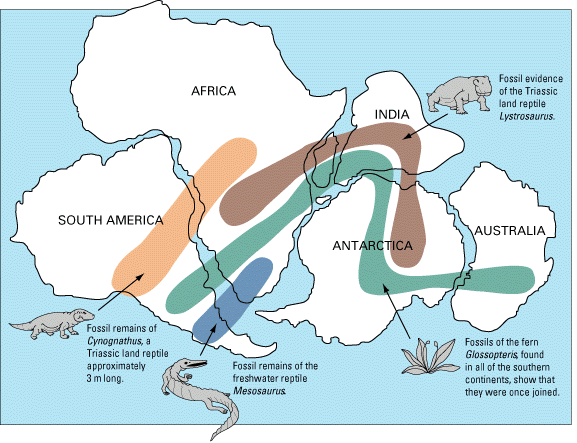
Fossil evidence for plate tectonics
Both Darwin and Wallace proposed that variation within a species of organisms was due to nature acting on certain characteristics to favor reproductive success for some individuals over others. Like Mendel, Darwin and Wallace knew about artificial selection, the intentional manipulation of inherited traits of plants and animals by people. They proposed that nature might act in the same way, and that over very long periods of time, species would be expected to change as a result.
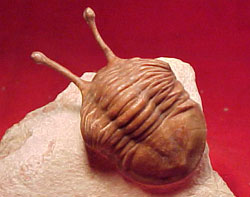
Fossil trilobyte
To Darwin, survival of the fittest did not mean that the biggest and strongest organisms would live the longest. To Darwin, fitness was about reproductive success. What survived were not individuals, but characteristics that were passed from generation to generation. Characteristics that lead to greatest adaptation increase fitness. Darwin and Wallace figured out, unlike Jean Baptiste Lamarck before them, that it was species that change, not individuals.
Besides Darwin, who also developed the idea of evolution through natural selection?
The correct answer is C. Wallace worked on the evolution theory at the same time as Darwin. Lamarck is considered the forerunner of evolution. Lyell was a geologist and Cuvier was an anatomist, who both studied and aged fossils.
What was Darwin’s greatest contribution to evolutionary theory?
If you selected C, you are correct! Think natural selection when you think about Darwin. Ideas about evolution were around long before Darwin.
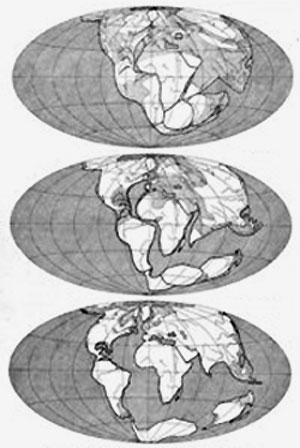
The phenomenon of continental drift also supports evolutionary theory. Earlier scientists had hypothesized about this idea, but it was Alfred Wegener (1915) who outlined the theory that Earth once had one land mass, named Pangaea. This land mass split and began to drift apart around 200 million years ago. The shape of the continents and current movement of tectonic plates supports the idea of continental drift. Species that evolved more than 200 million years ago, such as conifers and reptiles, have relatively similar fossils around the world; those that evolved later, such as mammals and flowering plants, are much more diverse across the globe.
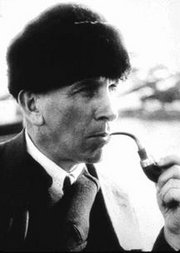
Alfred Wegener
Today we know that the incredible diversity of life on Earth is the result of subtle changes in DNA over billions of years. The favored method for creating phylogenies is via studying conserved genes, those that code for basic life functions common to all organisms.
The way biologists keep track of all that diversity has changed over time. Long before Darwin’s time, humans classified living things based on their common characteristics. Aristotle classified organisms as plant or animal, and further subdivided those groups based on appearance or whether they were found on land, in water, or in the air!
By Darwin’s day, classification was most often based on morphology or comparative anatomy. As we learned more about heritability, reproductive modes and development became important taxonomic tools. Biochemical characteristics and modes of metabolism have often been used to classify bacteria. Today, phylogenies based on molecular genetics show us just how similar we are to all living things, despite the great diversity in life. Cladograms are a way of showing the degree of relatedness of organisms. All living things can be placed somewhere on a branch of the tree of life, as is demonstrated by the impressive Tree of Life Web Project.
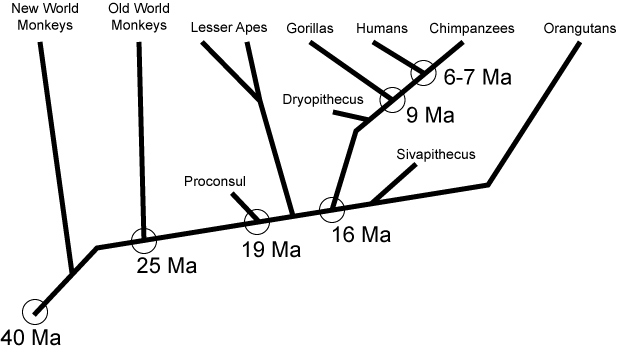

Primate and insect cladograms
Today, living things are grouped into 3 domains: Archaea, Bacteria, and Eukarya. The two prokaryote domains, Archaea and Bacteria, are thought to have evolved from a common prokaryote ancestor, the first kind of living organism.
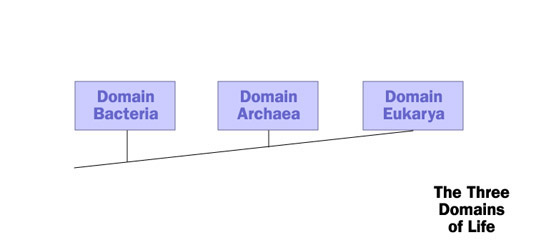
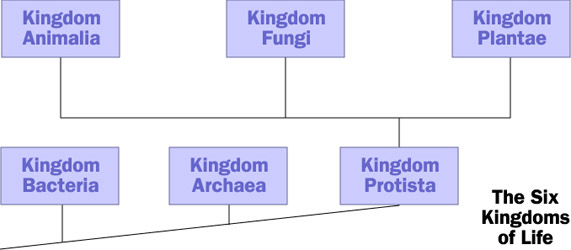
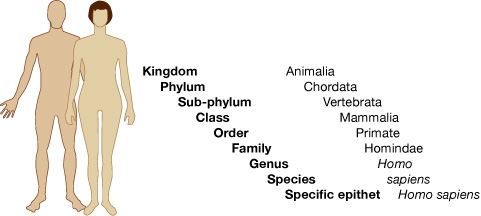
In which domain can a prokaryote be classified?
If you chose B, you are correct! Choice A is a phylum, choice C is a kingdom, and choice D is domain, yet it is for eukaryotes.
By bringing together the concepts of heredity put forth by Mendel, ideas about natural selection developed by Darwin and Wallace, and our ever expanding knowledge of the genomes of living things, the modern tenets of biology point to an underling unity beneath the diversity of life on Earth today.